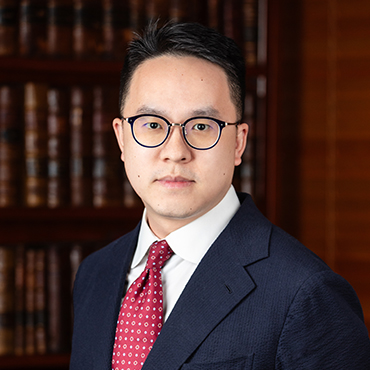HKSAR v Choy Kin Yue (2022) 25 HKCFAR 360, [2022] HKCFA 27 (Brian Tsui)
Edwin Choy SC leading Brian Tsui and Jonathan Lin represented the respondent in HKSAR v Choy Kin Yue (2022) 25 HKCFAR 360, [2022] HKCFA 27.
D was convicted after trial before a Magistrate of unlawful assembly contrary to s.18 of the Public Order Ordinance (Cap.245). The prosecution case was that a police officer on plainclothes duty in a shopping mall was approached by a person who demanded that he reveal his identity as a police officer. Subsequently, a group of people including a co-defendant of D trailed closely behind the officer and some people made denigrating and threatening remarks against him. When the officer came out from the mall, D trailed closely behind him with three others, and used a video camera continuously to make a recording of the officer. The Magistrate convicted D. D appealed against conviction to the Court of First Instance. The Judge, despite finding that the filming by D came within the scope of prohibited conduct under s.18(1) of the Public Order Ordinance, that D was aware of the acts of the other defendants and that his conduct had the effect of procuring or encouraging them to commit their prohibited acts, quashed D’s conviction: he referred to the law set out in HKSAR v Lo Kin Man (2021) 24 HKCFAR 302 and concluded that although there was a reasonable inference supported by the evidence that D had the requisite participatory intent, it was not the only reasonable inference. The prosecution was granted leave by the Appeal Committee to appeal to this Court on the basis that the Judge had misapplied the judgment in HKSAR v Lo Kin Man and that substantial and grave injustice had been done.
Held, unanimously allowing the appeal and restoring the conviction and sentence, that:
(Per Lam PJ, the other Judges agreeing)
- (1) “Participatory intent” in the offence of unlawful assembly had two ingredients: (a) the defendant intended to become part of the assembly; and (b) while the defendant assembled together with these other participants and was aware of the related conduct of other participants, he intended to engage in or act in furtherance of the prohibited conduct. Ingredient (a) referred to the intention to become part of an assembly, whilst ingredient (b) referred to the mental state of the defendant in acting in the way he did when he participated (HKSAR v Lo Kin Man (2021) 24 HKCFAR 302 applied). (See paras.24-26.)
- (2) For present purposes, the unlawful assembly only came into being after D had joined the other defendants in the group trailing closely behind the police officer. D was one of the constituent offenders in the unlawful assembly and participated by committing a prohibited act, namely, filming when he was with the other defendants (HKSAR v Lo Kin Man (2021) 24 HKCFAR 302 applied). (See paras.34-35.)
- (3) On ingredient (a), namely D’s intent to become part of the assembly, the Judge had wrongly laid emphasis on factors including his reservation against finding a consensus between D and other defendants, the different nature of the conduct of D and his lack of communication with the other defendants. In doing so where D’s participation was by committing a prohibited act, the Judge failed to have regard to the propositions laid down in HKSAR v Lo Kin Man: (i) the prohibited act of one participant could be different from that committed by another participant; (ii) there was no need to prove an agreement or consensus on the part of a defendant with the other participants in the commission of their prohibited conduct; and (iii) there was no need to prove an intention to offer mutual assistance to one another in the commission of the prohibited conduct. Had the Judge properly focused on D’s intent to become part of the assembly, the inescapable conclusion would have been that D had joined the assembly with the intent to become part of the group of people who pestered PW1 at close distance (HKSAR v Lo Kin Man (2021) 24 HKCFAR 302 applied). (See paras.36-43.)
- (4) On ingredient (b), namely D’s intent in his acts of participation, such intent could be established by reference to his intention to engage in the prohibited act while assembled with the other defendants. There was no doubt that he was aware of the related conduct of the other participants, or that he intended to engage in his filming of the officer. It was not necessary in the present case to prove that, by his filming of the officer, D intended to facilitate or encourage the other defendants in committing their prohibited conduct. Had the Judge properly directed himself as to D’s participation by committing a prohibited act and the requirement of participatory intent, the matters which he relied upon should not have precluded him from drawing an irresistible inference that D had the intent to commit the prohibited act (HKSAR v Leung Chung Hang Sixtus (2021) 24 HKCFAR 164, HKSAR v Lo Kin Man (2021) 24 HKCFAR 302 applied). (See paras.44-47.)
[The above is excerpted from the headnote to the report in HKCFAR.]


